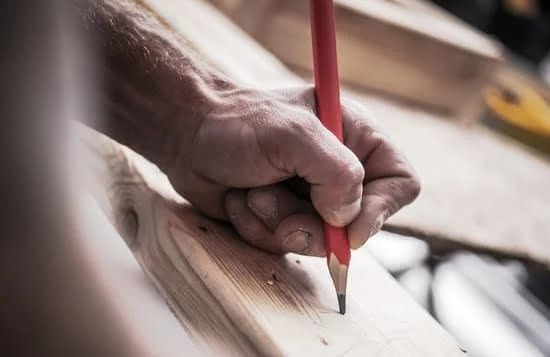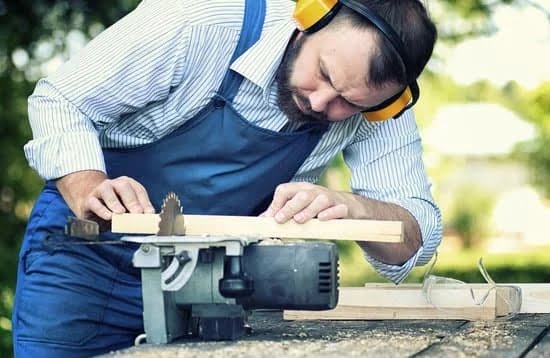Introduction
A hand saw is an essential tool for any woodworker and one of the most reliable tools to have when creating wood projects. It offers much more control than a power saw, allowing you to make precise cuts. Hand saws come in a variety of shapes and sizes, making them highly versatile in their applications. They are also lighter and smaller, making them easier to carry around the shop and more portable than a table saw or other large power tool.
Using a hand saw for woodworking offers several distinct advantages. As mentioned previously, it is incredibly easy to manipulate, offering incredible precision that cannot always be acquired from power tools such as table saws or routers. Unlike motor-powered tools which may cause kickback or create furrows in softer woods, the hand saw allows you to make clean, smooth cuts quickly and consistently. As there is no electricity involved, you can rest assured that these cuts are safe for both your workshop area as well as other members of your household who might be nearby. Furthermore, good hand saws will also last longer than some cheaper alternatives as they are made with sturdy materials that resist wear and tear over time.
Different Types of Hand Saws
When it comes to woodworking, having the right tool makes all the difference. A good hand saw for woodworking can be a key part of any carpenter or craftsperson’s kit. There are several different types of hand saw that can be used for different tasks and applications; care should be taken when selecting a saw to ensure it is suitable for the job at hand.
Crosscut – These saws typically have fewer teeth per inch, making them well suited to cutting across the grain. They are generally sharp and long-lasting due to their larger teeth, making them ideal for strong cuts on hardwoods.
Rip Cut – These saws typically have more teeth per inch which helps with accuracy on finer rips and detail work. They are very useful when cutting along the grain on softer woods as they minimize wastage, while also allowing fine finishing details.
Dovetail Saw – Dovetail Saws are specifically designed to cut very precise joinery commonly found in cabinetry work, furniture making and even in toys or model construction. Due to their narrow blades and steeply angled teeth these saws excel in extrememly precise cuts requiring little effort from the user.
Coping Saw – Coping Saws are perfect for intricate but quick cutting of curves and circles in thinner pieces of wood, as well as more robust applications such as slotting out any irregular shapes where more powerful tools may not necessarily be needed or appropriate. The blade of this type of saw is easily removed meaning a range of widths can be catered for with greater versatility than other standard types of hand saws when working on intricate pieces such as jewellery boxes or musical instruments where remarkable accuracy is essential.
Whatever type of hand saw you need to get the job done correctly, shopping around to find the right one is paramount to successful results in your woodworking projects!
Choose the Right One
A good hand saw for woodworking is a must-have tool for any serious carpenter or DIYer. Selecting the appropriate saw is paramount to successful results from your project. The blade needs to be the right size, shape, and sharpness in order to get the desired result. A regular household saw with a narrow blade may be okay for light projects, but it won’t be suitable when attempting something more complicated or detailed.
When selecting a good hand saw, there are several key factors to consider: strength of teeth, width of blade, material used in construction, straightness of blade and flexibility of handle. It is important to select a saw that is both rigid enough to pull straight and flexible enough not to break during heavy cuts or put excessive stress on your hands. Further, the strength of teeth should be chosen based on what type of cut you plan on making: rip cuts are best performed by a cross-cut saw while “crosscut” backsaw is better suited for cutting along the grain; whereas more delicate cuts require a finer tooth count which leaves smoother results. In addition, the flexibility of handle matters as it impacts comfort level during use as well as accuracy in many cases upon hitting stop points or corners. Finally, aftercare should also be taken into consideration; if you don’t have time for constant sharpening and repair then selecting an easier-to-maintain option (perhaps with built-in sharpener) would likely my preference over one requiring extensive maintenance before each use. Overall, with careful thought given to these factors choosing the right hand saw can make or break your carpentry endeavors!
Essential Features
Reliability: Hand saws should be reliable and well-made. Look for features such as non-slip handles that provide a comfortable grip, strong construction materials, solid blades and durable fastenings. It is also important to check that the teeth of the blade are well set and not loose or broken.
Precision Cutting: When woodworking, precision is key. Look for a hand saw with blades that have sharp edges to ensure accurate cuts and smooth lines. The blade should have variable teeth spacing that produces a clean cut without tearing the wood fibers.
Safety: Always prioritize safety when choosing any tool for woodworking projects. Selecting a hand saw that operates safely will prevent any injuries from happening in the process of using it. Check for features such as non-slip teeth on the blade for improved grip to enhance safety during use, and ensure the handle has reliable clamps secure it firmly in place when you are using it. It is also wise to look out for cushioned handles which can reduce risks of blisters or chafing caused by repeated usage.
Proper Maintenance
A good hand saw for woodworking is only as good as its maintenance and usage. Woodworkers should pay attention to the notes specified by the manufacturer when it comes to proper maintenance and usage of their saws. Cleaning and sharpening are two important steps in ensuring that a saw will perform as expected. Dirt or sap buildup can cause a saw to become dull quickly, while lack of regular sharpening can make cutting difficult and increase the chances of damage or injury. It ise recommended to sharpen the blade at least once a month to keep it performing at optimal levels – lubrication, frequent examination, and proper storage are all necessary steps in properly maintaining your hand saw.
Moreover, using a saw safely plays an important role in keeping both yourself and your tools safe when woodworking. Choose a saw with enough teeth to cut quickly but safely within reasonable kerf widths. Investing in a quality blade guard prevents kickbacks by preventing debris from being thrown back from the blade, which inevitably occurs even with so called ‘safety mechanisms’ due to cutting forces generated by the swirling teeth on the circular blades being interacted upon material (wood). Always read instruction manuals beforehand, check for signs of dulling before each use, wear safety goggles when operating power tools and wear ear protection if there’s too much noise – all these practices help protect you when you work in your shop of factory.
Benefits and Uses
Hand saws are a vital tool for woodworking projects. Not only can you use them to cut shapes, curves, and joints into pieces of wood, they also provide accuracy and control that other tools simply cannot match. With the right hand saw in your arsenal of tools, you’ll be able to tackle a variety of woodworking projects with ease.
When it comes to choosing the correct saw for your project, there are three main factors to consider – size, type, and quality. Saws come in several sizes and range from basic models to expensive options with more advanced features. Quality is also essential – choose materials that won’t corrode or rust as you work on various projects.
In addition to versatility and dependability when it comes to cutting through rough material, using a hand saw can also be very enjoyable for many hobbyists. The feel of controlling the saw by hand and creating intricate cuts gives a great sense of satisfaction that can’t be replaced by electric or battery-powered tools. The precision available when working with a hand saw allows for perfect cuts in any wood project imaginable.
A good hand saw is an invaluable tool that should be part of every woodworker’s arsenal – regardless whether they are an amateur DIYer or a professional carpenter. Whether tackling intricate curved cuts or rough straight lines, having the right equipment will ensure success in whatever project you embark upon!
Conclusion
A good hand saw is essential for any woodworking project. When selecting a hand saw, it is important to consider the range of applications you will use it for. You should choose one with a sharp blade and comfortable handle that doesn’t cause strain on your hands. Consider its size – larger blades gradually cut deeper than their smaller counterparts, which can be used for more intricate projects like toys and furniture. Various type of hand saws are available in the market such as bow saws, hacksaw, copingsaw, jigsaws and more – research different brands and observe recommendations from woodworkers before taking the plunge. Investing in a quality tool from the start saves not only time but also money in the long run since finding the wrong tool means having to buy another. With these tips in mind, we hope you make an informed choice when selecting a hand saw for your next project.

Hi everyone! I’m a woodworker and blogger, and this is my woodworking blog. In my blog, I share tips and tricks for woodworkers of all skill levels, as well as project ideas that you can try yourself.





